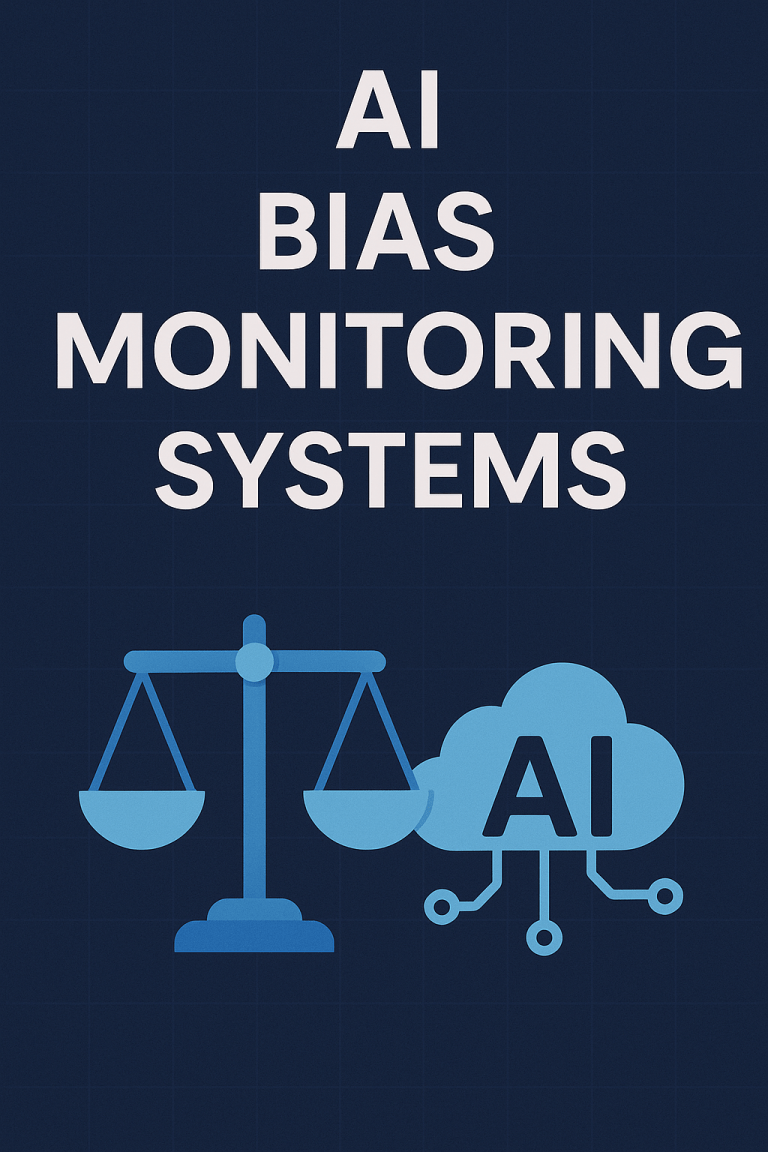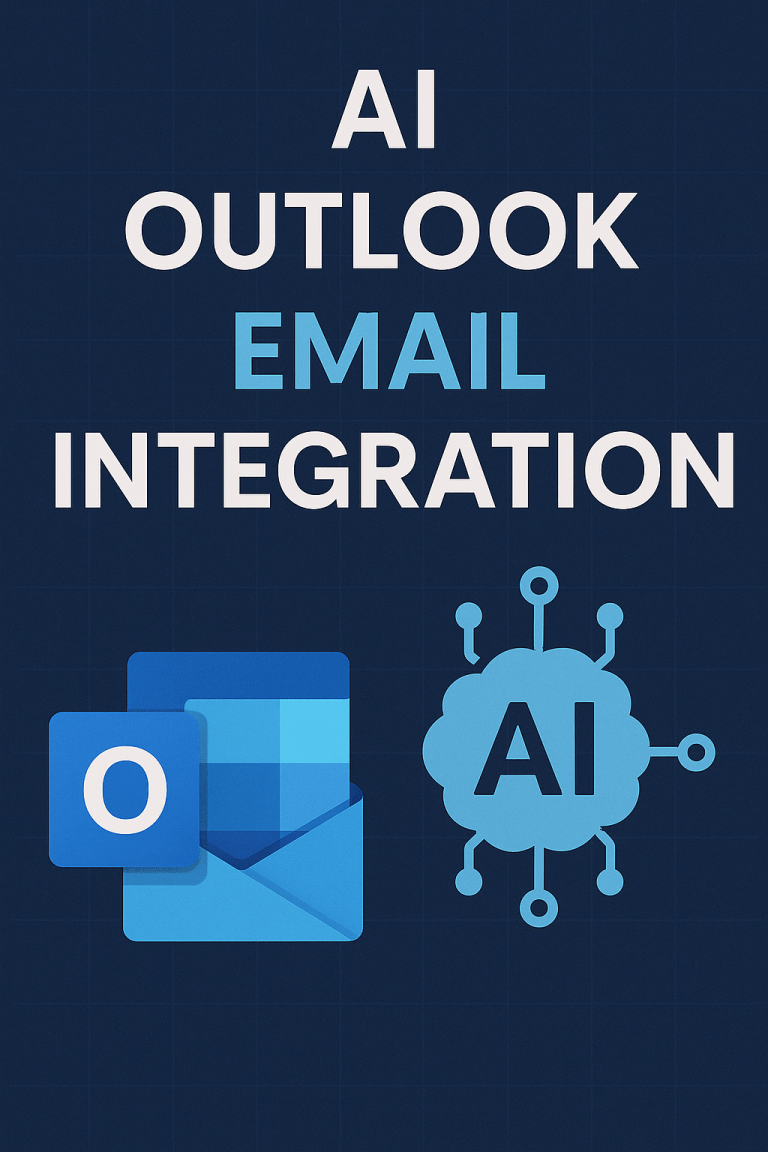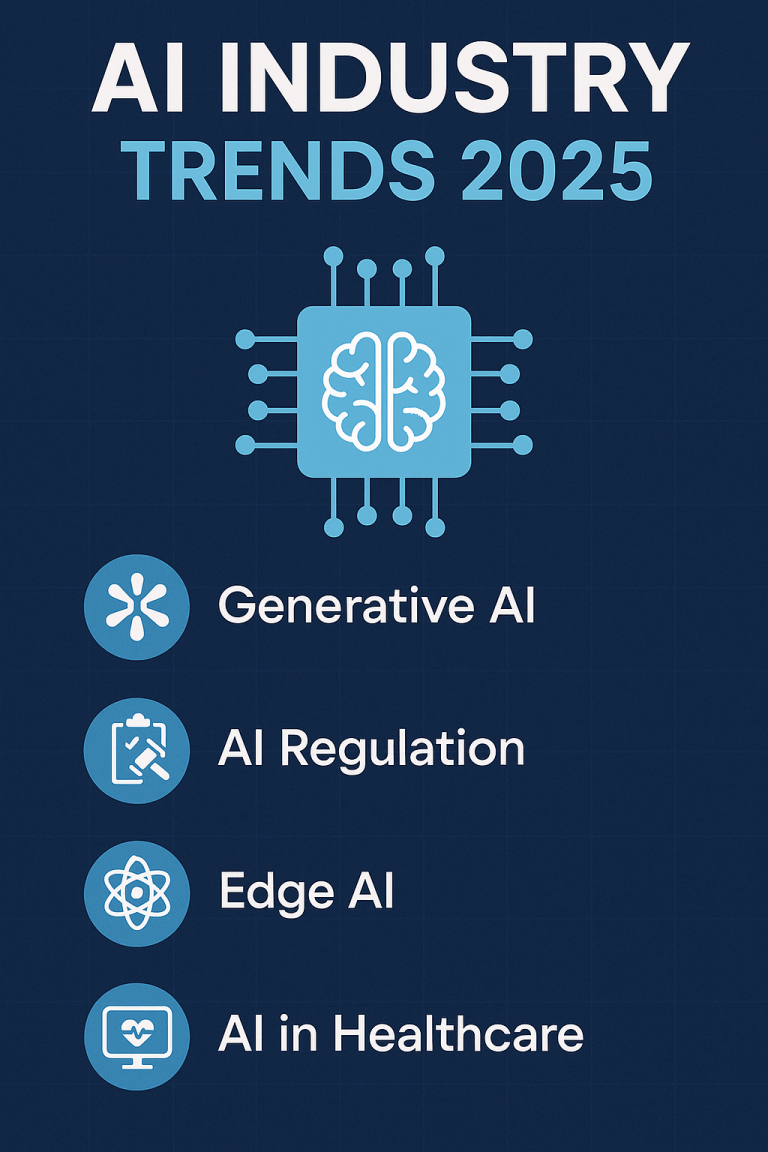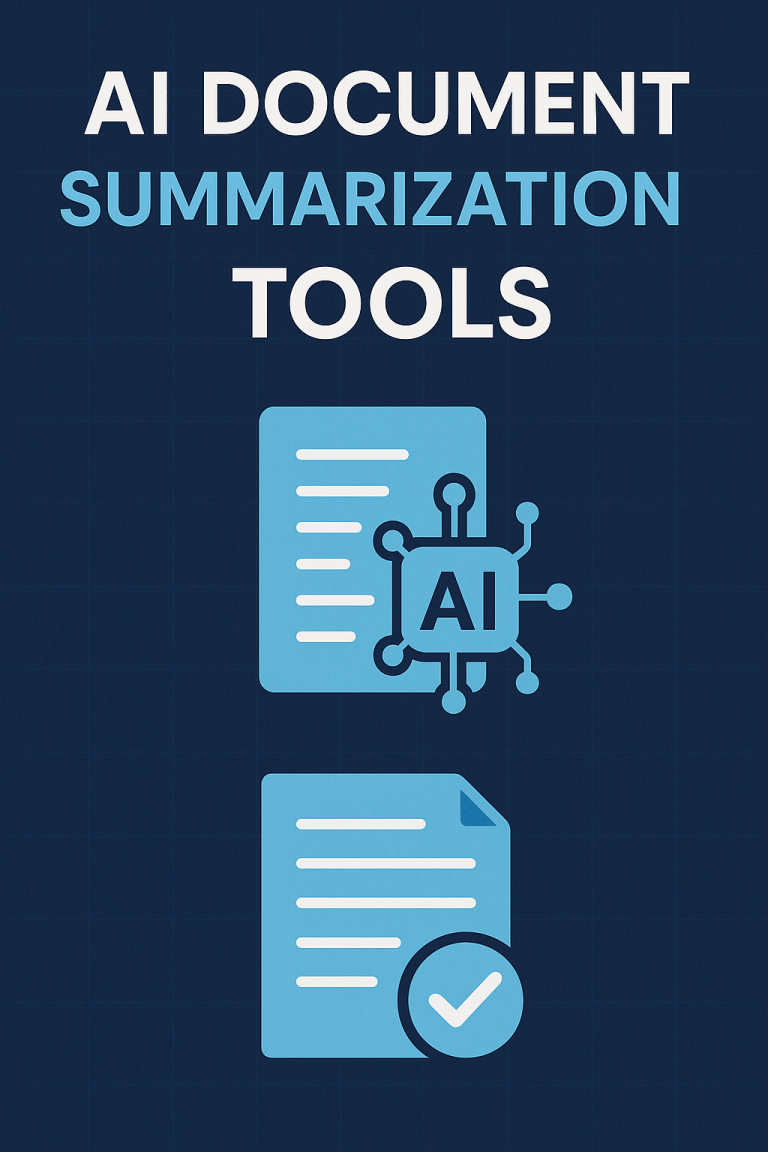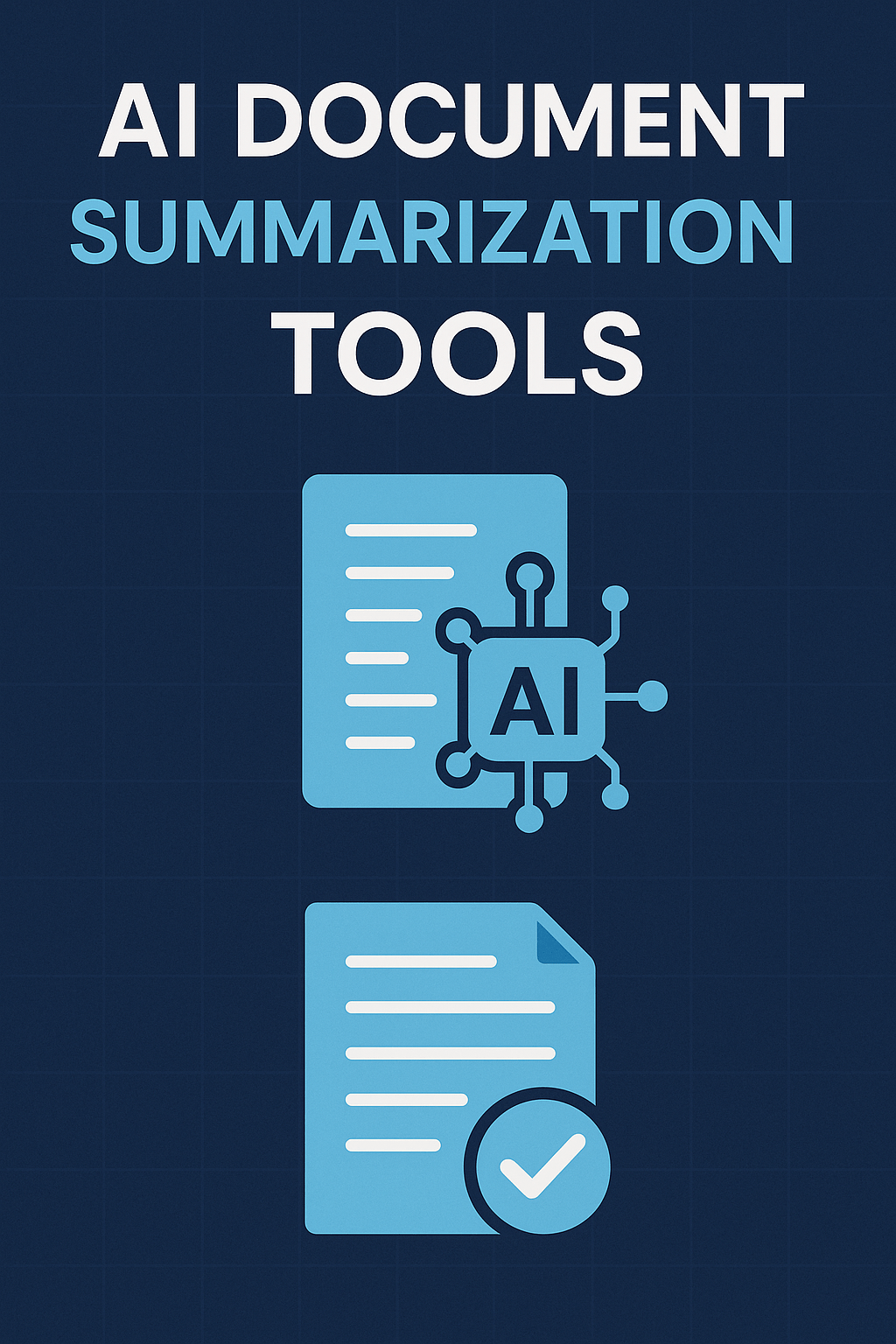
Are your teams drowning in documents? You’re not alone. The average knowledge worker now spends 9.6 hours per week simply reading information.
AI document summarization tools slash this time burden by automatically distilling key points from reports, articles, legal documents, and more. These tools use advanced natural language processing to create concise summaries that capture essential information.
Let’s break down what these tools can do, which ones deliver the best results, and how to implement them effectively.
How AI Document Summarization Actually Works
AI summarization tools fall into two main categories:
Extractive Summarization
- What it does: Identifies and pulls out key sentences from the original text
- Accuracy level: Higher factual accuracy (93%) since it uses existing sentences
- Best for: Formal documents where exact wording matters
Abstractive Summarization
- What it does: Creates new sentences that capture the meaning of the original
- Accuracy level: Moderate factual accuracy (87%) but better conceptual synthesis
- Best for: Creating natural-sounding summaries of complex information
The most advanced tools now use a hybrid approach, combining the factual reliability of extractive methods with the readability of abstractive techniques.
Key Components of Effective Summarizers
The best AI summarization tools include:
- Context awareness: Understanding the document type and subject matter
- Key point identification: Detecting truly significant information
- Redundancy elimination: Removing repeated concepts
- Coherence maintenance: Ensuring the summary flows logically
- Length control: Adjusting summary length based on user needs
Top AI Document Summarization Tools for 2025
Enterprise Solutions
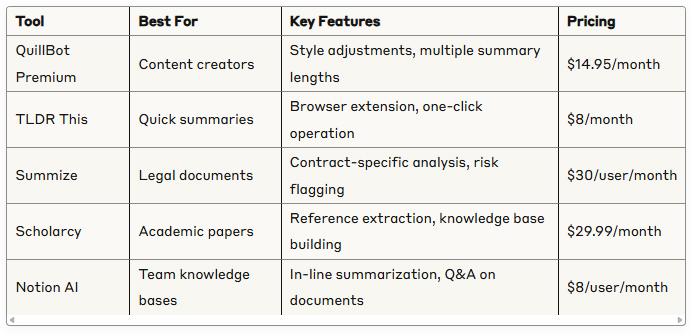
Free and Affordable Options
- Quillbot (Free Tier)
- 1,200 character limit per summary
- 2 summary modes
- Quick web interface
- ChatGPT
- Effective for shorter documents
- Requires manual input
- Allows follow-up questions on summaries
- Otter.ai
- Primarily for meeting transcription
- Includes automatic summary generation
- Free tier available for basic use
- Wordtune Read
- Chrome extension for web content
- Article and PDF summarization
- Free with daily usage limits
Open Source Alternatives
For organizations with technical resources, these open-source frameworks offer customizable summarization:
- Hugging Face Transformers: Flexible implementation of state-of-the-art models
- spaCy: Python library with summarization capabilities
- NLTK: Classic NLP toolkit with extractive summarization functions
Industry Applications That Drive ROI
Legal Sector
- Contract analysis: Reduces review time by 79%
- Case research: Helps attorneys process 3.4x more precedents
- Due diligence: Cuts document review costs by up to 60%
Legal teams at firms like Allen & Overy report saving 5-10 hours per week per attorney using AI summarization tools.
Academic Research
- Literature reviews: Researchers process 4x more papers
- Grant applications: Quickly synthesize previous work
- Peer review: Efficiently evaluate methodology and findings
Universities report a 65% increase in research productivity when using these tools for literature analysis.
Business Intelligence
- Market reports: Extract actionable insights quickly
- Competitor analysis: Summarize product details and strategies
- Financial documents: Distill lengthy statements and reports
Business analysts using these tools report 47% faster decision-making.
Content Marketing
- Content repurposing: Turn long-form into social media posts
- Content research: Quickly process industry publications
- Content editing: Streamline review processes
Marketing teams achieve 3.7x content output using AI summarization in their workflows.
Implementation Challenges
Despite their benefits, AI summarization tools face several hurdles:
Accuracy Limitations
- 23% of users report occasional factual errors in abstractive summaries
- Domain-specific terminology can be misinterpreted
- Nuance and tone sometimes get lost in translation
Integration Friction
- Many tools lack seamless integration with existing document systems
- File format compatibility varies widely
- API limitations can hinder enterprise-wide deployment
Security Concerns
- 67% of organizations worry about uploading sensitive documents
- Data retention policies among vendors vary
- On-premises options are limited for high-security environments
Future Developments on the Horizon
The next generation of summarization tools will feature:
- Multi-document summarization: Creating single summaries from multiple related documents
- Cross-lingual capabilities: Summarizing documents in one language and outputting in another
- Multi-modal processing: Including charts, images, and tables in summarization
- Interactive summaries: Allowing users to expand sections of interest
5-Step Implementation Guide
Follow these steps to successfully implement AI summarization in your organization:
1. Assess Your Document Types
First, categorize your documents to determine which AI summarization approaches will work best:
- Long-form reports → Extractive + abstractive hybrid
- Legal documents → Primarily extractive
- Creative content → Primarily abstractive
2. Select the Right Tool
Match your primary document types to the appropriate tool capabilities:
- High-volume needs → Enterprise solutions
- Technical teams → API-based or open-source options
- Individual users → Browser extensions or web-based tools
3. Start With a Pilot Program
Begin with a controlled implementation:
- Select a specific team or department
- Choose a limited set of document types
- Establish clear metrics for success
- Run for 30-60 days before expanding
4. Train Users Effectively
Ensure adoption through proper training:
- Demonstrate time-saving benefits directly
- Provide examples of good vs. poor summary applications
- Create clear guidelines for when to use (and when not to use) AI summaries
5. Measure and Optimize
Track these key metrics to quantify success:
- Time saved per document
- User satisfaction scores
- Decision quality and speed
- Information retention rates
Final Thoughts
AI document summarization tools aren’t just nice-to-have productivity boosters—they’re becoming essential for knowledge workers facing information overload.
Organizations implementing these tools report:
- 37% reduction in reading time
- 29% improvement in information retention
- 42% faster decision-making processes
- 51% higher team collaboration efficiency
The key to success? Choosing the right tool for your specific document types and implementing it strategically.
Which documents in your organization would benefit most from AI summarization? The answer might just transform how your team works with information.
Unlock your AI Edge — Free Content Creation Checklist
Get the exact AI-powered process to 10X your content output — blogs, emails, videos, and more — in half the time.
No fluff. No spam. Just real results with AI.

